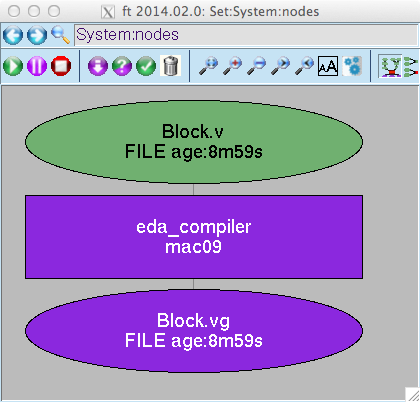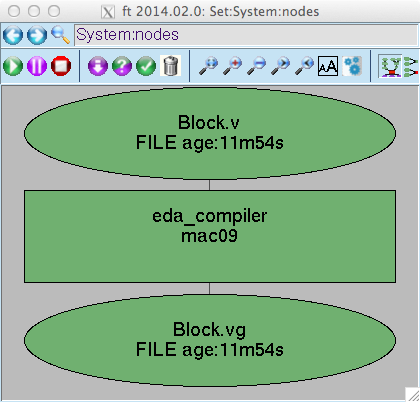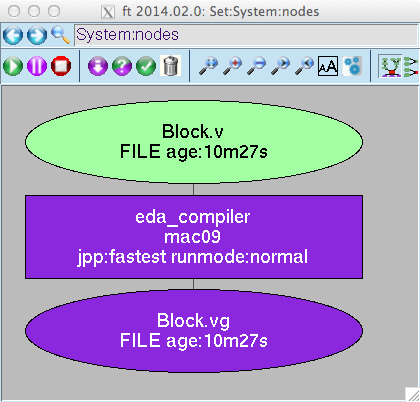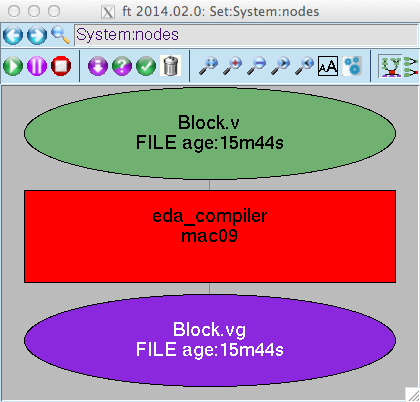Example 1
% mkdir aof_ex1
% cd aof_ex1
% date > Block.v-
To run Example 1, create a directory and create a file called
Block.v.
% mkdir aof_ex1 % cd aof_ex1 % date > Block.v -
Start a FlowTracer project and start a GUI:
% vovproject create art_of_flows % vovproject enable art_of_flows % vovconsole -view graph -set All:nodes &
Example 1 with Scripts
The first script is "naked", the second has more frills.
% $VOVDIR/training/art_of_flows/example1/script1_1.csh Block.v Block.vg
% $VOVDIR/training/art_of_flows/example1/script1_2.csh Block.v Block.vgExample 1 with make
The first makefile is simple, the second tries to augment the information about how
the job is executed by printing additional information on stdout.
% make -f $VOVDIR/training/art_of_flows/example1/Makefile1_1
% make -f $VOVDIR/training/art_of_flows/example1/Makefile1_2If you have Accelerator, you can also try a makefile that has hard-coded links to a
specific scheduler:
% make -f $VOVDIR/training/art_of_flows/example1/Makefile1_3Example 1 with FlowTracer
The two flow descriptions yield exactly the same result.
% vovbuild -f $VOVDIR/training/art_of_flows/example1/Flow1_1.tcl
% vovbuild -f $VOVDIR/training/art_of_flows/example1/Flow1_2.tcl


